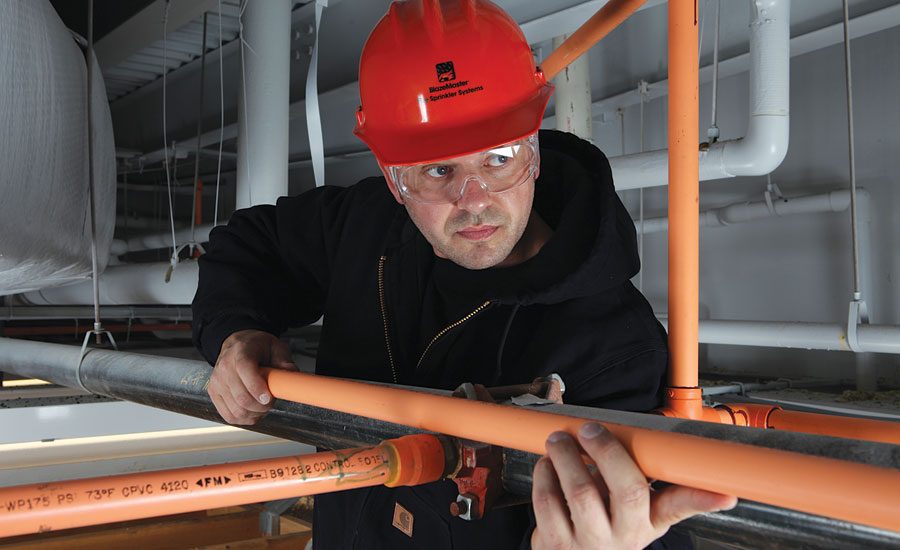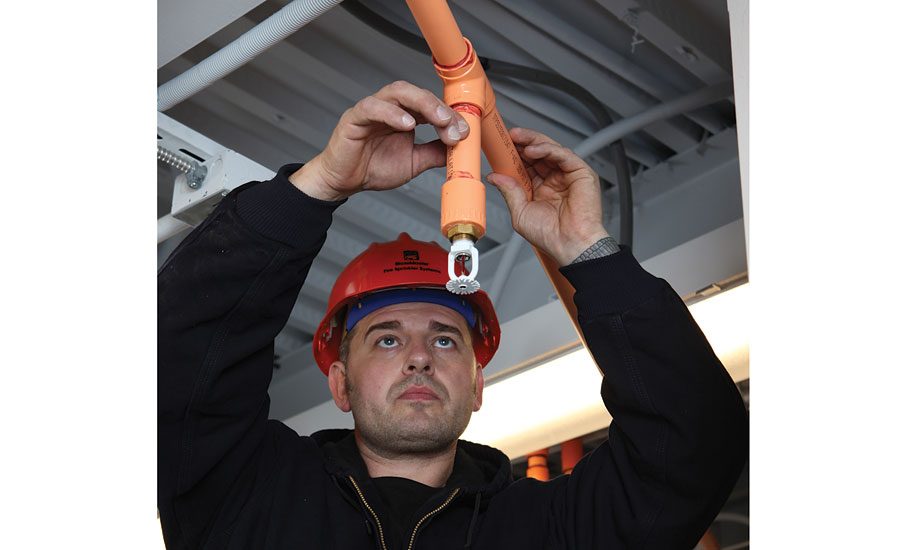Washington town mandates fire sprinklers
In 2003, legislation was introduced to require fire sprinklers in new residential housing in Camas, Washington.

Fire sprinklers help protect residents in Camas, Wash. Photo credit: BlazeMaster

The benefits to builders of installing sprinklers include facilitating narrower streets, permitting additional units, increasing fire hydrant spacing and more. Photo credit: BlazeMaster


In 2003, legislation was introduced to require fire sprinklers in new residential housing in Camas, Wash., a small city in the southwestern part of the state.
Despite the backing of local fire officials, the measure failed in City Council after opposition from homebuilders and real estate agents.
Yet, last year, without an ordinance, 214 of 215 new homes in Camas were built with fire sprinklers. How was this accomplished?
It’s largely due to Randy Miller, deputy fire marshal for the Camas-Washougal Fire Department, who didn’t want to give up the fire protection residential sprinklers provide. But how? Miller and his predecessors realized that builders might voluntarily add sprinklers if given the proper incentives.
So, the fire department agreed that if a builder added fire sprinklers, the city would waive the fire impact fee it usually assessed each new house. The fee in Camas is $0.20 per square foot, or $700 for a 3,500-square-foot house, an amount that lessened the extra cost to builders of adding sprinklers.
The second approach took advantage of a strict fire code in Camas (pop. 23,000), a fast-growing, affluent community perched on the Columbia River near Vancouver, Wash., and Portland, Ore.
The land is hilly and builders want to get as many lots as possible out of their property. To do so, they sometimes needed waivers from the fire code, which regulates a lot of development.
When developers asked for waivers, Miller asked for sprinklers in return.
Want a narrower road than required? Put in sprinklers.
Want to limit the number of exits and entrances to a new development? Put in sprinklers.
Want to build on a slope that is steeper than allowed? Put in sprinklers.
Want to build in an area with below-standard hydrant flow? Put in sprinklers.
Miller knew the added protection of sprinklers would offset any increased risk in loosening the fire code.
Developers didn’t like it (“It’s been an unpleasant job many times,” Miller says), but if they wanted to build as many lots as possible, they agreed to it and, over the years, the number of sprinklered homes grew to about 2,000 of the 7,500 in the city.
“The council of builders probably had no idea the percentage we were getting,” Miller adds.
“For us, slow, steady and patient is the way to do it,” Camas Mayor Scott Higgins said.
“Everybody was sort of aware that 99% of the homes in Camas were being sprinklered. That was seen as the price of doing business out there,” says James Howsley, government affairs director for the Building Industry Association of Clark County, which had helped defeat the ordinance in 2003.
The BIA and real estate agents had so resigned themselves to sprinklers in Camas that when another ordinance was introduced this year, no one showed up to testify against it. They did send a letter in opposition, but the ordinance requiring sprinklers in new one- and two-family homes passed easily.
That means Miller will no longer have to swap waivers for sprinklers and the city can again begin collecting the fire impact fee.
“It was a very emotional moment for me,” Miller says. “It’s like a weight was taken off my shoulders.”
Builders benefit from sprinklers
There are many financial “trade ups” that developers can receive in some communities for including fire sprinklers. These benefits include:
-
Narrower streets;
-
Longer dead-end streets;
-
“T” turnarounds permitted, creating at least one additional lot per cul-de-sac;
-
Increased street grades and building setbacks;
-
Additional units permitted;
-
Expansion of existing water supply might not be needed;
-
Increased hydrant spacing;
-
Building code alternatives that allow for fewer fire-rated portioning requirements; and
-
Allowing delayed access via gated communities.
As the example of Camas shows, sprinklered developments benefit builders, residents, the fire service and the overall community.
Looking for a reprint of this article?
From high-res PDFs to custom plaques, order your copy today!











